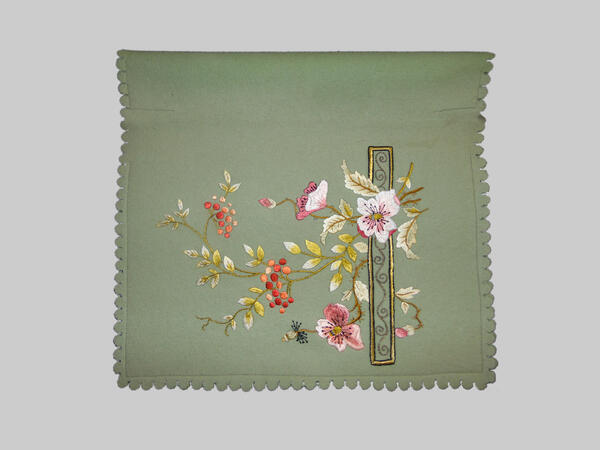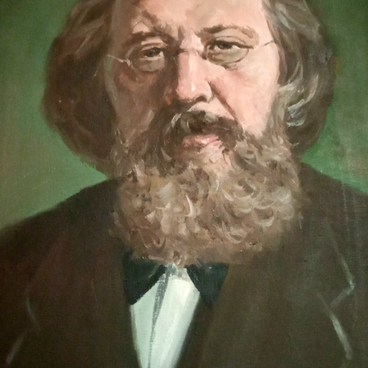The autobiographical works of Sergey Timofeevich Aksakov capture with almost documentary precision the life of the Ufa nobles and family life of the Volga landlords in the late 18th - early 19th centuries. This was facilitated by the fact that the Aksakovs’ family house was the meeting place for several generations of the Russian Empire’s greatest minds. Contrasting with the clubs and salons in St. Petersburg and Moscow, meetings in the Aksakov house stood out for a wider range of topics discussed, as well as a much warmer atmosphere, as Sergey Timofeevich always combined his brilliant erudition with politeness, kindness and responsiveness.
In the 19th century, periodicals were one of the main sources of both news and general knowledge about the world, so in the intelligent reading family of the Aksakovs, newspaper organizers were probably among the most frequently used interior items. A newspaper organizer is a handy accessory for temporary storage of newspapers, magazines, booklets and other printed publications. The exposition in the ‘Large sitting room’ features a fabric newspaper organizer, dating back to the early 20th century. Such organizers were most often hanged on a wall or furniture edges. It is sewn from light-green variety of felt, made of rabbit fur. It is embroidered with a floral composition, and embossed on the edges.
The peak of popularity of newspapers and periodicals was reached at the turn of the 20th century. By this time there was a huge variety of different kinds of magazine and newspaper organizers, though there were much fewer textile versions compared to wooden ones. A variety of types of wood were used for making such magazine racks: oak, beech, walnut, apple, alder. Often wooden racks were designed for use on tabletops. They were made in the shape of open holders, vases, boxes, etc. Placed on a table, they were usually filled with fresh issues of magazines or newspapers. The only essential drawback of such organizers was their rather limited capacity.
However, the varieties installed on the floor were significantly more spacious. Some of them were so large that they were closer to modern bookcases in size. Some varieties with small wheels though were much more mobile, allowing to transport the newspapers and magazines around a hall, ship board or a train car. There were also wall mounted organizers, which looked quite nicely when filled, covering the usually empty vertical surfaces.
In the 19th century, periodicals were one of the main sources of both news and general knowledge about the world, so in the intelligent reading family of the Aksakovs, newspaper organizers were probably among the most frequently used interior items. A newspaper organizer is a handy accessory for temporary storage of newspapers, magazines, booklets and other printed publications. The exposition in the ‘Large sitting room’ features a fabric newspaper organizer, dating back to the early 20th century. Such organizers were most often hanged on a wall or furniture edges. It is sewn from light-green variety of felt, made of rabbit fur. It is embroidered with a floral composition, and embossed on the edges.
The peak of popularity of newspapers and periodicals was reached at the turn of the 20th century. By this time there was a huge variety of different kinds of magazine and newspaper organizers, though there were much fewer textile versions compared to wooden ones. A variety of types of wood were used for making such magazine racks: oak, beech, walnut, apple, alder. Often wooden racks were designed for use on tabletops. They were made in the shape of open holders, vases, boxes, etc. Placed on a table, they were usually filled with fresh issues of magazines or newspapers. The only essential drawback of such organizers was their rather limited capacity.
However, the varieties installed on the floor were significantly more spacious. Some of them were so large that they were closer to modern bookcases in size. Some varieties with small wheels though were much more mobile, allowing to transport the newspapers and magazines around a hall, ship board or a train car. There were also wall mounted organizers, which looked quite nicely when filled, covering the usually empty vertical surfaces.



